#rosario ortega
Text
youtube
#Rosario Ortega#Juan Ingaramo#pop#love#shakira#latin#r&b#soul#tu#latin america#argentina#colombia#2023#Youtube
0 notes
Text

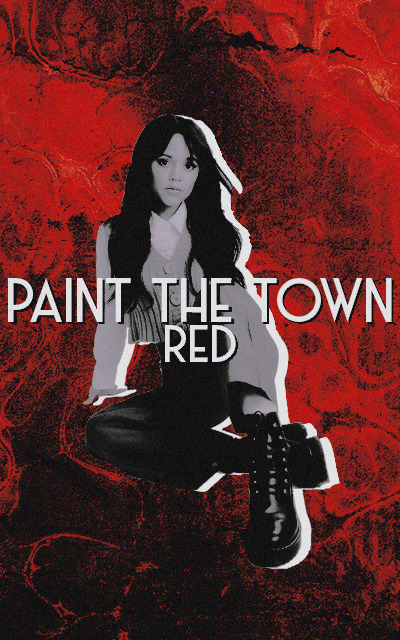



#dacre montgomery#jenna ortega#rosario dawson#zendaya#zendaya coleman#zoey deutch#avatar#400*640#rpg#forum rpg#crescembre
7 notes
·
View notes
Text

The cast of Votes V: Legacy
#miguel tanfelix#martin del rosario#radson flores#matt lozano#ysabel ortega#liezel lopez#raphael landicho#filipino#filipino fc#asiancentral#userthing#kapuso#january 2023#voltes v legacy
2 notes
·
View notes
Text
Tremors 2: Aftershocks
Benvenuti o bentornati sul nostro blog. Nello scorso articolo abbiamo ripreso a parlare di animazione e lo abbiamo fatto con la DreamWorks, arrivando in questo modo a parlare del loro 11° film animato ossia Madagascar. La storia parla di quattro animali dello zoo di New York: Alex, Marty, Gloria e Melman. Marty, la zebra, vorrebbe poter tornare alla natura anche solo per un giorno e l’incontro…

View On WordPress
#Amalgamated Dynamics#Bob Ducsay#Brent Maddock#Burt Gummer#Carlos Ortega#Christopher DeFaria#Christopher Gartin#comedy#commedia#Earl Bassett#fantascientifico#Fantascienza#film#Fred Ward#Graboid#Grady Hoover#Helen Shaver#horror#horror fantascientifico#Jay Ferguson#José Rosario#Kate Reilly#Marcelo Tubert#Marco Hernandez#Michael Gross#movies#Recensione#Recensione film#Ron Underwood#sci-fi
0 notes
Text
Cómo hacer periodismo bajo una dictadura: lecciones de Nicaragua / Fernando Chamorro
El periodista nicaragüense Carlos F. Chamorro dictó la Reuters Memorial Lecture el 6 de marzo de 2023. Chamorro es un editor galardonado con varios premios y el fundador del diario digital Confidencial. Ésta es una transcripción de su conferencia en español
Muchas gracias al Instituto Reuters para el Estudio del Periodismo que me honra al invitarme a compartir nuestra experiencia sobre el…

View On WordPress
#100% Noticias#Artículo 66#Barricada#Café con Voz#Confidencial#Daniel Ortega#dictador#Dictadura#dictadura en Nicaragua#Divergentes#FSLN#Instituto Reuters para el Estudio del Periodismo#Nicaragua Investiga#Radio Darío#Reuters Memorial#Rosario Murillo
1 note
·
View note
Text
DÍAS DE GUARDAR Domingo 8 de octubre de 2023
Marco Adame le hace la tarea a Diego Sinhue
La guerra sucia irrumpe en Morena
Villarreal, el lastre de la gobernadora Teresa Jiménez
Continue reading Untitled
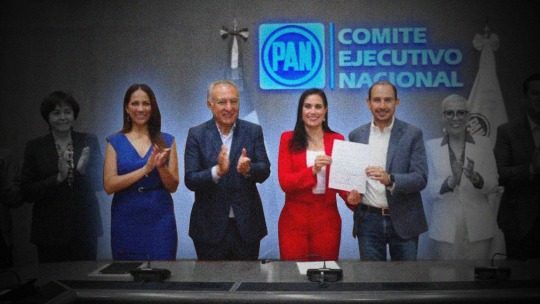
View On WordPress
#Aguascalientes#Eduardo López Mares#Ernesto Prieto Ortega#Juan Carlos Alcántara#Libia Dennise García#Luis Alberto Villarreal#Marco Antonio Adame#Marko Cortés#Morena#PAN#Ricardo Sheffield#Rosario Corona#Sucesión 2024#Teresa Jiménez
0 notes
Text
Thousands of young Nicaraguans, together with Commander President Daniel Ortega and Vice President Rosario Murillo, participated in the celebration of the 45th anniversary of the triumph of the Sandinista Popular Revolution, held in Plaza de la Fe in Managua.
#Nicaragua#Sandinistas#revolution#anniversary#workers#peasants#anti-imperialist#Latin America#Struggle La Lucha
17 notes
·
View notes
Text
character list
the title is self explanatory. this is a list of the characters i'll write for. it'll probably change over time, and if you see a character you'd like but don't see them on the list, just ask cause i might've forgotten about them
Hamilton
Eliza Schuyler
Angelica Schuyler
Peggy Schuyler
Maria Reynolds
Alexander Hamilton
John Laurens
Philip Hamilton
Lafayette
Hercules Mulligan
James Madison
Thomas Jefferson
Aaron Burr
Umbrella Academy
Viktor Hargreeves
Diego Hargreeves
Klaus Hargreeves
Allison Hargreeves
Luther Hargreeves
Five Hargreeves
Ben Hargreeves (Umbrella or Sparrow)
Sloane Hargreeves
Jayme Hargreeves
Stranger Things
Will Byers (non female readers only)
Mike Wheeler
Lucas Sinclair
Dustin Henderson
Eleven Hopper
Max Mayfield
Robin Buckley (non male readers only)
Nancy Wheeler
Jonathan Byers
Steve Harrington
Eddie Munson
21 Chump Street
Justin Laboy
The Goldfinch
Boris Pavlikovsky
Theodore Decker
Marvel
Peter Parker (any actor)
Steve Rogers
Bucky Barnes
Sam Wilson
Makkari
Sersi
Sprite (platonic only)
Steven Grant
Marc Spector
Layla El-Faouly
America Chavez (non male readers only)
Kate Bishop
Yelena Belova (platonic only)
Shuri
Namor
Riri Williams
X-Men
Mystique
Kitty Pryde
Peter Maximoff
Rogue
Logan Howlette
Wade Wilson/Deadpool
Scott Summers
In The Heights (movie version)
Usnavi de la Vega
Vanessa
Nina Rosario
Benny
Sonny de la Vega
Heathers
Veronica Sawyer
JD (Jason Dean)
Heather Chandler
Heather McNamara
Heather Duke
John Doe
John Doe
Ride The Cyclone
Noel Gruber (male or nb readers only)
Ocean O'Connel Rosenburg
Mischa Bachinski
Constance Blackwood
Ricky Potts
Hatchetfieldverse
Paul Matthews
Emma Perkins
Ted Spankoffski
Bill Woodard
Ruth Fleming
Pete Spankoffski
Richie Lipschitz
Max Jagerman
Grace Chasity
Lex Foster
Ethan Green
Hannah Foster (platonic only)
Heartstopper
Charlie Spring (non female readers only)
Nick Nelson
Tara Jones (non male readers only)
Darcy Olsson (non male readers readers only)
Elle Argent
Tao Xu (non male readers only(headcanoning him as bi or pan is disrespectful and transphobic))
Tori Spring
Imogen Heaney
Isaac Henderson (platonic only)
Do Revenge
Eleanor Levetan (non male readers only)
Drea Torres
Wednesday
Wednesday Addams
Enid Sinclair
Bianca Barclay
Xavier Thorpe
Ajax Petropolus
Eugene Otinger
(young) Morticia Addams
(young) Gomez Addams
Beetlejuice
Lydia Deetz
Tomorrow When The War Began
Ellie Linton
Lee Takkam
Fiona Maxwell
Homer Yannos
Spider-Man: Into the Spider-Verse/Across the Spider-Verse
Miles Morales
Gwen Stacy
Pavitr Prabhakar
Hobie Brown
Margo Kess
Miles G Morales (earth 42)
Miguel O’Hara
Maze Runner
Thomas
Newt (non female readers only)
The Broken Hearts Gallery
Lucy Gulliver
Nadine (non male readers only)
Nick Danielson
Treasure Planet
Jim Hawkins
Enola Holmes
Enola Holmes
Lord Tewkesbury
Turning Red
Mei Mei
Miriam
Abby
Priya
Raising Dion
Nicole Warren
Tevin Wakefield
Dion Warren (platonic only)
Julie and the Phantoms
Julie Molina
Luke Patterson
Reggie Peters
Alex Mercer (non female readers only)
Flynn
Carrie
Abbott Elementary
Janine Teagues
Jacob Hill (non female readers only)
Gregory Eddie
Brooklyn Nine-Nine
Jake Peralta
Amy Santiago
Rosa Diaz
Love Victor
Victor Salazar (non female readers only)
Benji (non female readers only)
Felix Weston
Pilar Salazar
Lake Meriwether
Lucy
Mia Brooks
Andrew
In Treatment
Eladio
Laila
Spree
Kurt Kunkle
Once Upon a Time
Emma Swan
Regina Mills
Killian Jones
Mary Margaret Blanchard
David Nolan
Henry Mills
Mulan (non male readers only)
Graham
Neal Cassidy
Peter Pan
Jefferson
Dash and Lily
Dash
Lily
Boomer
Juno
Juno MacGuff
Paulie Bleeker
Summer Days Summer Nights
Debbie Espinoza
Frankie Espinoza
Scream (1 through 6)
Sidney Prescott
Billy Loomis
Mickey Altieri
Roman Bridger
Jill Roberts
Charlie Walker
Sam Carpenter
Tara Carpenter
Amber Freeman
Chad Meeks-Martin
Mindy Meeks-Martin
Quinn Bailey
Venom
Eddie Brock
Honest Thief
Ramon Hall
Beth Hall
Wild Child
Poppy Moore
Kate
Drippy
Freddie Kingsley
Monsters and Men
Manny Ortega
Marisol Ortega
Ghostbusters: Afterlife
Trevor Spengler
Phoebe Spengler (platonic only)
Error 143
Micah Yujin
Community
Abed Nadir
Troy Barnes
Annie Edison
Jeff Winger
Britta Perry
The Obession
Logan
Delilah
The New Girl
Lia Setiawan
Stacey Hoffman
Mythic Quest
Poppy Li
Brad Bakshi
Adventure Time
Finn
Princess Bubblegum
Marceline
Marshall Lee
Prince Bubblegum
Flame Princess
School Spirits
Madison
Simon
Charley (non female readers only)
Wally
Rhonda
Dungeons and Dragons: Honour Among Thieves
Simon Aumar
Disventure Camp
Aiden (non fem readers only)
James (non fem readers only)
Grease: Rise of the Pink Ladies
Jane Facciano
Olivia Valdovinos
Nancy Nakagawa
Cynthia Zdunowski
Richie Valdovinos
Ted Lasso
Ted Lasso
Roy Kent
Jamie Tartt
Keeley Jones
Sam Obisanya
Transformers: Rise of the Beasts
Noah Diaz
Elena Wallace
Mirage
Helluva Boss
Blitzø
Stolas (non female readers only)
Loona
Millie
Moxxie
Octavia
Verosika Mayday
Fizzarolli
Asmodeus
Hazbin Hotel
Charlie Morningstar
Vaggie (non male readers only)
Angel Dust (non female readers only)
Husk
Alastor (platonic only)
Vox
Lucifer
Teenage Mutant Ninja Turtles (rise + mutant mayhem + tmnt 2007 + tmnt 2012)
Donnie
Mikey
Raph
Leo
April
The After Party
Yasper Lennov
Space Force
Tony Scarapiducci
Renfield
Teddy Lobo
Robert Montague Renfield
Undercovers
Bill Hoyt
Amazing Digital Circus
Jax
Parks and Recreation
Leslie Knope
Ben Wyatt
April Ludgate
Andy Dwyer
Jean-Ralphio Saperstein
Randy Cunningham: 9th Grade Ninja
Randy Cunningham (18+ people DNI unless requesting platonic stories)
The Earliest Show
Josh Bath
House of Lies
Clyde Oberholt
Mean Girls (movie + musical + movie musical)
Cady Heron
Regina George
Gretchen Wieners
Karen Smith/Shetty
Janis Ian/Sarkisian/Imi'ike (non male readers only)
Damian Hubbard (non female readers only)
Warm Bodies
R
Peep World
Nathan Meyerwitz
Your Boyfriend
Peter Dunbar
Invincible
Mark Grayson
Shapesmith
Chilling Adventures of Sabrina
Sabrina Spellman
Harvey Kinkle
Nick Scratch
Rosalind Walker
Theo Putnam
Prudence Blackwood
Ambrose Spellman
High School Musical: the Musical the Series
Gina Porter
#froggywritesstuff#tgwdlm x reader#John doe x reader#Heartstopper x reader#do revenge x reader#Deadpool x reader#Wednesday x reader#tomorrow when the war began x reader#treasure Planet X reader#Enola Holmes x reader#love Victor x reader#in treatment x reader#kurt kunkle x reader#once upon a time x reader#dash and Lily x reader#summer days summer nights x reader#venom x reader#honest theif x reader#Ghostbusters Afterlife x reader#Micah Yujin x reader#the obsession x reader#Simon Aumar x reader#rottmnt x reader#ben schwartz x reader#teddy lobo x reader#mean girls#Warm bodies#adventure time#mythic quest#your boyfriend
129 notes
·
View notes
Text
This summer marks the 45th anniversary of the Nicaraguan Revolution, when the guerilla forces of the Sandinista National Liberation Front (FSLN) overthrew the Somoza dictatorship, the U.S.-backed dynasty that had ruled the country for more than 40 years. On July 19, 1979, after nearly two decades of struggle, armed Sandinistas entered the capital of Managua victorious, their red and black bandanas heralding a new era of socialist transformation.
The jubilation of victory was quickly tempered by the exigencies of war. From 1980 to 1989, a coalition of counterrevolutionary forces known as the Contras—who were financed and trained by the United States during the Reagan administration—waged a ruthless but unsuccessful terror campaign to unseat the revolutionary government. Between 30,000 and 40,0000 people died in the ensuing violence.
FSLN commander Daniel Ortega emerged as the leader of the revolutionary junta, and he was elected president in 1984. Six years later, Ortega was voted out by a coalition of opposition groups. In 2007, he was reelected and has served as president ever since, since the National Assembly modified the Nicaraguan Constitution in 2014 to allow for his indefinite reelection in contests widely recognized as shams.
Today, 17 years into Ortega’s rule, the 1979 revolution’s promise of liberation and equality has become little more than window dressing for another iron-fisted dictatorship. It is not one of the proletariat or of the people, but of another all-powerful family, led by Ortega and his wife, Rosario Murillo, who is often referred to as his “co-president.” But as the two tighten their grip on power, it seems to be slipping through their fingers, and their rule appears increasingly precarious.
For nearly two decades, “the commander” and “comrade Rosario” have consolidated power through a series of radical legislative and constitutional changes. Murillo has steadily increased her influence since 2008, when she was appointed president of the Councils of Citizen Power, party-state committees that ensured loyalty to the regime and distributed resources at the local level. She assumed Nicaragua’s vice presidency in 2017 after a constitutional reform allowed for her election despite being the president’s wife.
“Ortega’s dictatorship is unique insofar as he is singularly uncharismatic and is uninterested in direct appeals to the Nicaraguan people that other more personalist populist leaders rely on to bolster support,” said Michael Paarlberg, an associate fellow at the Washington, D.C.-based Institute for Policy Studies and a professor of political science at Virginia Commonwealth University. Instead, Paarlberg added, Ortega “has had to rely chiefly on repression, both to create fear and to shrink the pool of potential rivals within civil society, religious institutions, and NGOs,” or nongovernmental organizations.
Any inkling of dissent in Nicaragua has been met with ruthless military violence. In 2018, soldiers, police, and paramilitary death squads crushed a civil rebellion, leaving more than 350 people dead, at least 2,000 injured, and thousands more imprisoned, disappeared, or exiled. Ortega and Murillo have since further entrenched their dictatorship, clamping down on the opposition, securing control of the judiciary and legislature, purging the party-state apparatus of perceived traitors, and criminalizing civil society.
The government has outlawed public protest; seized the offices and assets of dozens of news outlets; revoked the legal standing of thousands of nonprofit organizations, universities, and churches—most recently in mid-August, when the regime banned 1,500 nonprofit organizations in a single day—and denounced hundreds of students, journalists, literary figures, and human rights defenders as “foreign agents,” stripping them of their citizenship. Since 2018, more than 300,000 Nicaraguans have sought asylum in neighboring Costa Rica—and U.S. Customs and Border Protection has encountered nearly 440,000 at the southern border of the United States. Many hope to win an asylum claim. Today, 1.5 million Nicaraguans—roughly 22 percent of the country’s population—live outside the borders of their homeland.
Recently, however, the Ortega dictatorship has appeared increasingly precarious as the presidential couple pluck away at the base of their own house of cards. Ortega and Murillo are getting old—they are 78 and 73, respectively—and the prospect of a democratic opening hangs over their hopes for smooth dynastic succession. All signs indicate that the couple is positioning their son Laureano to succeed his mother after she inherits the presidential crown from her husband.
But as Ortega and Murillo grow more isolated and self-destructive—executing mass purges and banning civil society groups—their popularity continues to wane, down to about 15 percent by last Gallup count in 2023. As their inner circle shrinks and their enemies multiply, a seamless succession appears increasingly unlikely.
For many observers, the question is not whether the dictatorship will implode, but when and how.
“There is no question that the dictatorship of Daniel Ortega and Rosario Murillo is getting weaker and weaker every day,” said Tamara Dávila, a leader of the opposition coalition Blue and White National Unity who is now exiled in the United States. Dávila believes that Ortega’s death or departure from office could create the possibility for a democratic opening despite the regime’s hopes for dynastic succession.
“The question is what that possibility will look like,” she said.
Since February 2023, when the regime released, banished, and denaturalized Dávila and 221 other political prisoners, Nicaragua has drifted out of the international spotlight. But repression and terror continue apace; according to the most current and commonly cited estimate, at least 141 political prisoners languish in Nicaragua’s prisons, according to the United Nations, enduring isolation, torture, and other inhumane conditions.
Dora María Téllez, a celebrated former Sandinista commander, was one of the 222 dissidents imprisoned and then exiled by the Ortega-Murillo regime. She said that the real number of political prisoners in Nicaragua is much higher than 141. “Families are afraid to report people as political prisoners. So there’s probably a little over 250 in total,” she told me in a recent interview. “But it’s a system of revolving doors: They let some out, they bring more in. … It’s a mechanism of repression that the Ortega-Murillo regime uses to keep the whole country intimidated.”
As recently as April, police intensified patrols in Nicaragua’s major cities, detaining five family members of protesters who were killed during the 2018 crackdown. On April 15, the body of opposition activist Carlos Alberto Garcia Suárez was found in a garbage dump in the city of Jinotepe. His corpse was badly burned, but police ruled out foul play, and the coroner ordered an immediate burial without an autopsy.
What is left of the opposition in the country is small and operates in secrecy.
Power in Nicaragua is structured vertically. Members of Ortega and Murillo’s loyal inner circle have some influence over decision-making, but their main role is administrative: All policy decisions lie in the hands of the ruling couple. Dismissals for perceived disloyalty are routine, and purges are increasingly common. Often, they are carried out under the personal direction of Murillo, maneuvering to eliminate perceived threats to her presumed succession.
No one is immune: Friends and close relatives of the couple have been branded traitors and remanded to El Chipote prison or exiled. In 2021, the former Sandinista commander Hugo Torres Jiménez, who risked his life securing Ortega’s release from prison in 1974, was prosecuted by the regime as a traitor. Torres had served as vice president of an opposition party led by ex-Sandinistas and was a vocal critic of Ortega and Murillo, calling the dictatorship “fiercer and more totalitarian than that of the Somozas.” He died in prison two years after his arrest, at age 73.
The presidential couple even went after Ortega’s brother, Gen. Humberto Ortega, a hero of the revolution and the former head of the Nicaraguan Army, accusing him of treason for criticizing the regime’s authoritarian drift and for questioning Murillo’s dynastic succession. On May 19, police surrounded Humberto’s home, placing him under house arrest. Later, after suffering symptoms of a heart attack, he was transferred to a military hospital in Managua.
“Just because we’re blood brothers, that doesn’t mean that Daniel and his group aren’t extremely uncomfortable with someone like me,” Humberto said in a recent interview with Infobae. “Some have even thought about eliminating me. I’ve never heard it from Daniel himself, but I’ve heard it from people who are close to him.”
In October 2023, the regime dismissed 10 percent of all judicial branch employees, including the president of the Supreme Court, a devoted Sandinista militant personally disliked by Murillo. Even the judge who had dismissed charges brought against Ortega for sexually assaulting his now-exiled stepdaughter, Zoilamérica Ortega Murillo, was caught up in the mass firing.
High-level officials continue to fall as the dictatorship closes ranks around Murillo. In the past six years, she has assumed an increasing share of power in areas once managed by her husband, such as the judiciary and Foreign Affairs Ministry. She has also maneuvered to eliminate intermediaries between her and the leaders of key institutions, such as the Interior Ministry, the attorney general’s office, and the national police. The resulting loss of power among Sandinistas loyal to Ortega has increased internal struggles within the party.
Last month, Nicaraguan police raided the office and home of Finance Minister Ivan Acosta, who was forced to resign—allegedly for acts of corruption, but more likely because he had fallen out of favor with the presidential couple. Employees in the Finance Ministry now fear a wave of dismissals, similar to those that occurred following Murillo’s purge last year of the Supreme Court, which resulted in the mass firing of some 900 government workers—including magistrates, secretaries, janitors, drivers, and even Ortega’s first-born son, Camilo Ortega Herrera, who led the court’s technical services department.
On Aug. 6, Nicaraguan news outlet Confidencial reported that in late July, Murillo dismissed Ortega’s chief police escort, Commissioner-General Marcos Alberto Acuña Avilés, who had served as a loyal member of the president’s security team since the 1990s.
All this reveals “an internal crisis tied up with the growing power of Rosario Murillo,” said Téllez, the former FSLN commander, who served as Nicaragua’s health minister from 1979 to 1990. “Rosario is not satisfied with appointees who are unconditionally supportive of Daniel Ortega. She wants people who are unconditionally supportive of her.”
The dismissals, surveillance, harassment, and imprisonment—not only of opposition figures, but also of Sandinista partisans, including high-level members of Ortega and Murillo’s inner circle—are dramatically reconfiguring the makeup of power in Nicaragua. The presidential couple has generated discontent, distrust, and fear at every level of the party-state apparatus.
With institutions in chaos, what little support and perceived legitimacy the regime has remains tied to the increasingly frail and marginalized figure of Ortega, who is a lingering symbol of the revolution. The vast majority of the Nicaraguan population disfavors the dictatorship, and it appears increasingly unlikely that Murillo would be able to fill his shoes without creating a power vacuum that could very well spell the regime’s end.
“Murillo is perhaps the only person in Nicaragua with a less credible claim on authority than Ortega, given her deep unpopularity and having never been popularly elected in a legitimate election,” said Paarlberg, the fellow with the Institute for Policy Studies.
“She would have no choice but to double down on repression,” he continued. “Should she fail to hold power, such as by failing to maintain the loyalty of the Sandinista security apparatus, it would create the conditions for a regime transition.”
4 notes
·
View notes
Text
July 2 (UPI) -- The U.S. Department of Homeland Security will fund a program to help Panama remove illegal migrants from within its borders, the Biden administration announced Monday.
"Irregular migration is a regional challenge that requires a regional response," Homeland Security Secretary Alejandro Mayorkas said in a news release Monday. "We are grateful for our partnership with Panama to manage the historic levels of migration across the Western Hemisphere."
The program will help the Panamanian government remove foreign nationals who illegally are in Panama.
The goal is to reduce "unprecedented irregular migration" through the Darien Province of eastern Panama and which is the entryway to Central America from South America.
About 520,000 "irregular migrants" with no legal basis traveled through Panama's Darien Province last year, according to the DHS.
The agreement with the Biden administration supports "safe and effective Panamanian repatriation operations," including protection screening of migrants, according to the DHS.
The repatriation operations include removal flights that are part of a comprehensive regional approach to addressing irregular migration in the Western Hemisphere.
The DHS will support training and capacity-building to enable "safe, humane repatriation processes in Panama," Mayorkas said.
The cooperative agreement supports the reduction of the "number of migrants being cruelly smuggled through the Darien, usually en route to the United States," National Security Council spokesperson Adrienne Watson said in a prepared statement Monday.
"Returning such individuals to their country of origin ... will help deter irregular migration in the region and at our southern border and halt the enrichment of malign smuggling networks that prey on vulnerable migrants," Watson said.
The Biden administration announced the agreement on the same day that newly elected Panamanian President Jose Raul Mulino was inaugurated.
"The United States reaffirms our long-standing partnership with Panama," Secretary of State Antony Blinken said in a prepared statement Monday. "We will work together to strengthen institutions,advance inclusive economic growth and promote good governance and citizen security."
Blinken said the United States also will work with Panamanian officials to "address the unprecedented level of illegal migration through the Darien and dissuade would-be migrants from attempting this extremely dangerous journey."
The Biden administration also has created sanctions and worked with other countries this year in attempts to tackle irregular migration patterns that can affect the United States, particularly at the southern border.
In May, Blinken announced $578 million in humanitarian, development and economic assistance for various countries in the Western Hemisphere. He unveiled the funds in Guatemala, where he had led a delegation to a ministerial meeting of the Los Angeles Declaration on Migration and Protection, a multi-country agreement aimed at combating migration and forced displacement.
Nicaragua also was the target of May sanctions from the United States. The Biden administration said Nicaraguan President Daniel Ortega and his wife, Vice President Rosario Murillo, were profiteering off the plight of "irregular migrants" seeking passage to the United States.
In February, the United States expanded visa restrictions to transportation operators accused of offering services that facilitate irregular migration. The State Department said the new policy would target owners, executives and senior officials of "charter flight, ground and maritime transportation companies providing transportation services designed for use primarily by persons intending to migrate irregularly to the United States."
3 notes
·
View notes
Photo




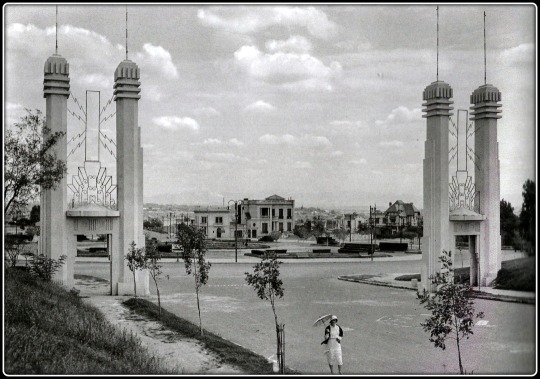


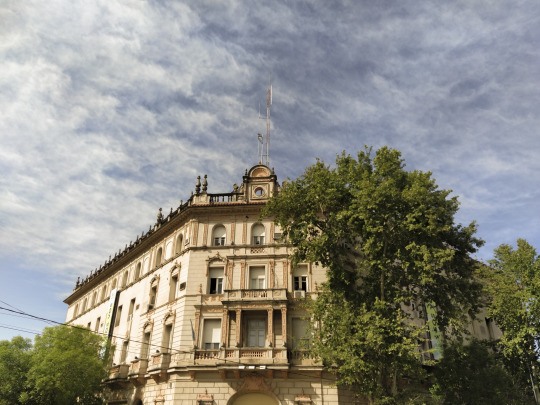
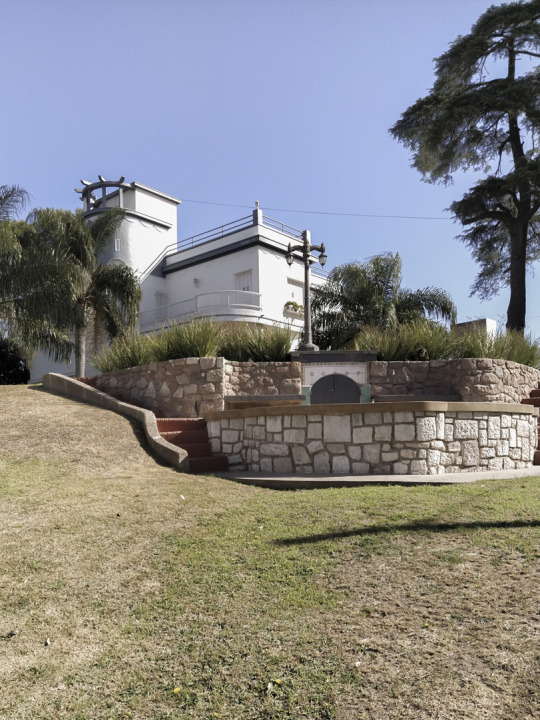

Ángel Terencio Lo Celso nació en Buenos Aires en 1900, aunque vivió su infancia y adolescencia en Rosario, donde se recibió de Técnico Constructor en 1917. Luego se mudó a Córdoba y estudió en la UNC, donde en un par de años obtuvo varios títulos: ingeniero geógrafo, ingeniero civil, arquitecto y por último, a sus 42 años, licenciado en filosofía.
En su obra abarcó muchos estilos, pero sin dudas fue uno de los pioneros de la arquitectura moderna en Córdoba. Lo Celso desarrolló su lenguaje durante tres décadas principalmente en viviendas y comercios. Atravesó diversos estilos pero su producción Art Decó es la más llamativa. Por ejemplo, en la cuadra de Humberto 1º al 200 tenemos algunos ejemplos de esta etapa: en 1931 proyectó la bellísima agencia Ford para los hermanos Feigin. La fachada está decorada con ruedas de autos que emulan a las del dios Hermes pero con ruedas de autos de la empresa. Originalmente estaba destinada a agencia y taller para la venta y reparación de automóviles. La puerta de entrada, el salón exposición y la sección repuestos, ocupaban la planta baja. La planta alta funcionaba como taller de pintura de coches y depósitos de los mismos.
En la otra esquina, la de Humberto 1º y Sucre, actualmente encontramos una confitería, donde originalmente se hallaba el salón de ventas de la concesionaria. Ese año Lo Celso se destacó realizando las puertas futuristas de ingreso para la Exposición de la Industria y Comercio en el Parque Sarmiento, como también diferentes stands de la muestra.
Durante la segunda mitad de la década de 1930 Lo Celso llevó su producción hacia el racionalismo. Realizó casas familiares para una clientela burguesa en Nueva y Alta Córdoba, principalmente. También incursionó en la realización de hoteles en la ciudad y en las zonas serranas como el antiguo Hotel Carena y el Palace, hoy Municipalidades de Villa Carlos Paz y Villa María, respectivamente.
La capilla de Santa Cruz (1936), a pocas cuadras de la Cañada, se trata de una de las primeras iglesias modernas en nuestro país. La cruz de la fachada nos expresa claramente la función para la cual fue creado el edificio, algo que vemos con frecuencia en las obras de su compañero en la UNC, Francisco Salamone, quien en ese año recién estaba comenzando su serie bonaerense.
A lo largo de la década del 40, Lo Celso inició otra etapa en la que retomó ciertas influencias coloniales hispánicas. En esta época realizó numerosas viviendas individuales y en especial un ejemplo en altura en el centro de la ciudad: el edificio Stabio (1949) de varios pisos con detalles neocoloniales.
Algunos años mas tarde, alejado de la construcción, propuso la transformación de la Escuela de Arquitectura de la UNC en Facultad. También cumplió una incansable labor como docente de Arquitectura y de Historia del Arte, además de ser pintor y violinista, constructor y teórico del arte, la arquitectura y el urbanismo.
Lo Celso fue, claramente, un espíritu renacentista que dialogó sobre el arte, la arquitectura y el pensamiento en sus libros y artículos. En ellos reflexionó sobre la filosofía, la búsqueda de raíces nacionales en oposición a la Arquitectura Moderna y también realizó estudios teóricos y técnicos sobre la arquitectura y la construcción.
A principios de los 1970s, publicó ���50 años de arte plástico en Córdoba desde el año 1920 al 1970”, un libro de más de 800 páginas. El 16 de agosto de 1974, falleció en la Ciudad de Córdoba.
Fuentes
Diccionario de Arquitectura en la Argentina, Editorial Clarín, Buenos Aires, 2004.
@cordobadeantano
Semblanza del arquitecto Ángel T. Lo Celso. El Diario de Carlos Paz
Revista de arquitectura
Quién es quién en la Argentina, Editorial Kraft, Buenos Aires, 1947.
Angel Lo Celso. Introducción a la Modernidad. B. de la Rúa, A.M. de Ortega y L. de Pupich. 1998
40 notes
·
View notes
Text
At OAS summit, Brazil seeks to soften criticism of Nicaragua’s government

Just hours before the start of the General Assembly of the Organization of American States (OAS) in Washington, D.C., the government of Brazilian President Luiz Inácio Lula da Silva is keeping diplomatic and political tempers high due to proposed corrections to a statement critical of the government of Daniel Ortega and Rosario Murillo in Nicaragua.
The Brazilian delegation made “substantive changes” to a document prepared by the United States, Canada, Costa Rica and Antigua and Barbuda on “the escalation of repression, the closure of civic space and human rights violations” in Nicaragua. Despite the conclusive reports by the United Nations group of experts and the Interdisciplinary Group of Independent Experts (GIEI), the Brazilian delegation questioned the commission of crimes against humanity by the Sandinista administration. The Brazilian diplomats eliminated the words “alarming conclusion” and replaced it with “there are elements.”
Moreover, the Brazilian diplomats added the word “alleged” to the passage about infringement of property and social security rights through the confiscation of property and assets and the denial of pensions for individuals deprived of their nationality by the Nicaraguan government, and which the promoters of the original declaration had emphasized.
Brazil also completely removed the mention of the dramatic levels of migration by Nicaraguans who have fled due to political persecution and the socio-political crisis raging since 2018, the year of massive social protests against the regime. On Tuesday, the Human Rights Collective Nicaragua Never Again denounced that this is the largest exodus in the history of Nicaragua, greater even than that of the 1980s, when the country fought a civil war that left tens of thousands dead: “At least 605,043 Nicaraguans have left their country in the last 62 months, nine percent of the total population, due to state repression against opponents, religious leaders and critics of the government of Daniel Ortega,” they remarked.
Continue reading.
#brazil#politics#brazilian politics#democracy#nicaragua#foreign policy#international politics#organization of american states#mod nise da silveira#image description in alt
18 notes
·
View notes
Text

The cast of Votes V: Legacy
#miguel tanfelix#martin del rosario#matt lozano#radson flores#ysabel ortega#filipino#filipino fc#asiancentral#userthing#kapuso#voltes v legacy#september 2023
2 notes
·
View notes
Text
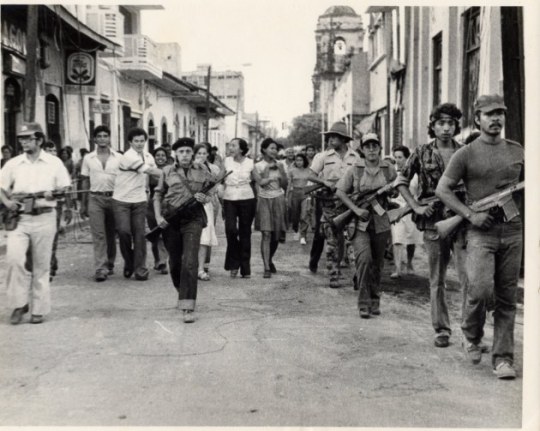
Siete claves para entender la situación actual de la Iglesia en Nicaragua:
La llegada del sandinismo al poder en 1979. En 1979, el Frente sandinista de liberación nacional (FSLN), fundado en 1961, logró derrocar a la dinastía de los Somoza,. Los sandinistas gobernaron desde ese año hasta 1990. Buenas parte de su llegada al poder fue gracias a la labor mediadora de la Iglesia Católica, liderada entonces por el que fuera cardenal de Managua, Miguel Obando y Bravo. En principio, los sandinistas - con Daniel Ortega y Sergio Ramirez a la cabeza- estuvieron cercanos a la Iglesia católica, pero pronto vino la ruptura al integrar a diversos miembros de la misma ( por ejemplo Ernesto Cardenal) como ministros y miembros del gobierno.
El Apercibimiento público de San Juan Pablo II. Los sacerdotes
fueron inhabilitados por el Vaticano. Cuando el papa Juan Pablo II visitó Nicaragua por primera vez (4 de marzo de 1983), dos acontecimientos impulsaron aún más el distanciamientos del sandinismo con la Iglesia Católica. El Apercibimiento público del papa Juan Pablo II a Ernesto Cardenal para que regularizara su situación y los gritos de quienes participaron en la misa multitudinaria con el gabinete sandinista en pleno. La gente gritaba consignas a favor del "poder popular" y de la paz interrumpiendo la Misa. En un momento, el papa respondió: "La primera que quiere la paz es la Iglesia". Hubo en ese tiempo de expulsiones de sacerdotes acusados de "terrorismo" y un ambiente de hostilidad no declarada en contra de la Iglesia. San Juan Pablo II recordaría aquél viaje como una "gran noche oscura"

3. La primera expulsión de un Obispo .
Con el poder, los sandinistas quisieron tomar revancha de las posiciones de la Iglesia y de la repulsa del papado de Juan Pablo II a los teólogos de la liberación.
Considerando que se trataba de una oposición a la revolución del pueblo. La persecución y el posible destierro del obispo Rolando Álvarez, trae recuerdo de la persecución y el exilio al que el régimen sometió en 1986 al obispo de Juigalpa, Pablo Vega. Mediante artilugios (entonces no usaban el método del cerco policiaco) invitaron al obispo Vega a una reunión. Ahí lo aprendieron, lo montaron a un helicóptero y lo dejaron del otro lado de la frontera con Honduras. La acusación, eso sí, fue similar a las de ahora: "traición a la patria".

4. Los años sin el poder del sandinismos.
Desde 1990 (las primeras elecciones democráticas después de los Tratados de Esquipulas II, en los que mucho tuvo que ver la Iglesia Católica de Nicaragua) hasta 2006, Daniel Ortega y su partido sandinista se mantuvieron en las filas de oposición con tres intentos fallidos de volver al poder. Durante ese tiempo, advertidos del prestigio de la Iglesia católica en la población nicaragüense, Ortega intentó congraciarse con ella. Tanto así que fue el propio cardenal Obando y Bravo el que ofició la misa de matrimonio católico de Ortega y Rosario Murillo quienes llevaban 25 años de convivencia conyugal . Incluso Ortega pidió perdón por "los errores y atropellos en contra de figuras de la Iglesia en el pasado "
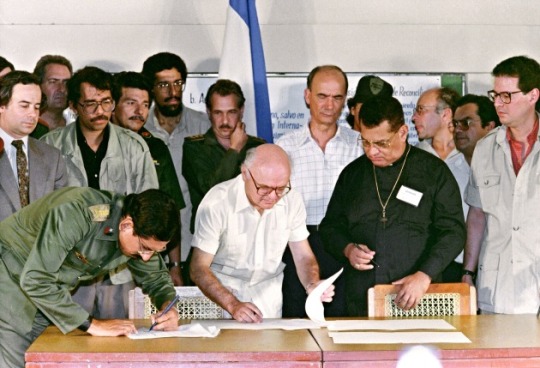
-Humberto Ortega firma el acuerdo de alto fuego con la Resistencia de Nicaragua el 23 de marzo en Sapoa. De izquierda a derecha Daniel Ortega (con anteojos), Joao Baena Soares, secretario general de la OEA, el cardenal Miguel Obando y Bravo y Alfredo César director de la Resistencia nicaragüense-
5."El viborazo" del Cardenal.
Corría el año de 1996 y Ortega buscaba volver al poder cuando ocurrió un hecho que marcaría la memoria de Ortega y de su esposa. Fue durante una homilía en la víspera de las elecciones, conocida como "la parábola de la víbora" o "el viborazo". Pronunciada por el cardenal Obando y Bravo, advertía a los votantes que no deberían acoger a una "víbora moribunda", pues, si se recuperaba, iba a matar a su salvador. Los analistas fueron unánimes en declarar que la víbora era Daniel Ortega.
A la postre, en esas elecciones, el triunfador fue Arnoldo Alemán, del Partido Liberal Constitucionalista. Y no sería hasta diez años más tarde, en 2006, cuando Ortega regresaría al poder, mismo que, desde entonces, no suelta, convirtiéndose en el dictador más longevo de América Latina, lo cual es mucho decir.
6.Primeras Advertencias.
Los años que van de 2006 a 2018 fueron años de crecimiento de las tensiones entre el régimen sandinista de Ortega Murillo y la Iglesia Católica. Otros de los grandes críticos, el obispo auxiliar de Managua, Silvio José Báez, quien ahora se encuentra en el exilio, en Miami (Florida, Estados Unidos) por requerimiento del papa Francisco (había recibido amenazas de muerte) dijo en 2011 que Nicaragua se enfilaba hacia un totalitarismo "visible o encubierto"
Varios obispos fueron hostigados entre ellos el obispo de Matagalpa, quien siempre se ha caracterizado por su oposición al régimen sandinista. De hecho , en su juventud se negó a realizar el servicio militar "patriótico" al que estaba "obligado" por la primera dictadura sandinista de los 80s.

7.La Gran Debacle.
Las más graves tensiones entre Ortega-Murillo y la Iglesia católica se han dado a partir del mes de abril de 2018. Entonces el régimen intentó una reforma a las leyes de seguridad social que desataron las protestas en todo el país, teniendo como foco ciudades como Managua , Masaya, Carazo, Matagalpa. Las protestas fueron reprimidas de manera violenta por la dictadura sandinista y por su fuerzas de seguridad, lo mismo que por grupos paramilitares. La iglesia católica fue la primera en proteger a quienes se manifestaban libremente y trató de ser la mediadora de un diálogo nacional por la paz. pero no lo logró. La respuesta de Ortega fue llamar a los obispos y a los sacerdotes terroristas y golpistas y la de Rosario Murillo llamarlos "diablos con sotana"
Extractos tomados de Aleteia.org
3 notes
·
View notes
Text
169 organizaciones sin fines de lucro canceladas por la dictadura nicaragüense
La dictadura de Daniel Ortega y Rosario Murillo en Nicaragua ha ordenado el cierre de 169 organizaciones no gubernamentales y sin fines de lucro, entre ellas varias iglesias evangélicas, católicas y una asociación musulmana. Este nuevo golpe se suma a las más de 5,600 ONG clausuradas desde 2018.
Leer más… »
0 notes